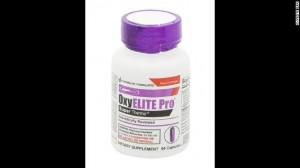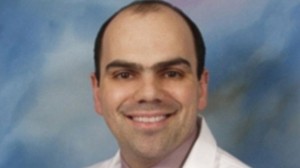In cooking, the process of clarification entails straining out extraneous muck from liquids so that they might be pure, clear and ideal for consumption. With this series on food terminology and issues we’re attempting to do the same.
If it seems food safety issues are on the rise, that’s because they are. About 48 million people contract some form of food poisoning each year, according to the Centers for Disease Control and Prevention.
Even in the midst of a government shutdown, crises like the current salmonella outbreak occur. But the question on many people’s minds is whether the federal investigators in charge of food safety are still around to protect the public, or if they too have been furloughed.
According to a Department of Health and Human Services contingency plan, the Food and Drug Administration “will be unable to support the majority of its food safety, nutrition, and cosmetics activities” in the event of a government shutdown. However, that plan identifies approximately 700 FDA staff members who would remain to “inspect regulated products and manufacturers, conduct sample analysis on products and review imports offered for entry into the U.S. This number includes active investigators who will be needed to perform inspections.”
The United States Department of Agriculture’s Food Safety and Inspection Service has 9,633 employees, 8,415 of whom are still working. A little more than 1,200 employees are furloughed but field inspections of meat, poultry and egg products continues, according to Dr. Elisabeth Hagen, Under Secretary for Food Safety at the USDA.
Bottom line they are on the job and reporting to work,” Hagen told CNN. “The Foster Farms alert (related to the Salmonella outbreak) is a result of an ongoing investigation.”
“So despite the government shutdown, food safety inspections remain at, or nearly at, normal levels. But that may not be as safe as you think.
For example, at any given time the FDA is responsible for watching over some 167,000 domestic food facilities or farms, and another 421,000 facilities or farms outside the United States, according to FDA officials. But there are only about 1,100 inspectors to oversee these facilities, officials told CNN in 2012.
There is a third party audit system, where farms or facilities hire auditors to inspect their premises and provide scores. But some say the audit system is full of conflicts of interest; shortly before Jensen Farms in Colorado caused a listeria outbreak that killed 30 people, a private inspection company’s auditor gave them a “superior” grade, even after noting that they had no anti-microbial solution in place to clean their cantaloupes.
Here is a breakdown of each of the government agencies in charge of food safety:
CDC
Stands for: Centers for Disease Control and Prevention
Food Safety Role: In the food safety chain, the agency’s mission is to protect the American public from health threats, usually in the form of food-borne illness.
The CDC works in tandem with the Food and Drug Administration to investigate individual cases and outbreaks of food-borne illness (primarily bacteria-based like listeria, salmonella and E. coli) and trace them back to their origin.
The CDC started the Foodborne Diseases Centers for Outbreak Response Enhancement (FoodCORE) in 2009 to develop and perfect methods to detect, investigate, respond to, and control multi-state outbreaks of food-borne diseases. Centers currently exist in Connecticut, Ohio, New York City, South Carolina, Tennessee, Utah and Wisconsin.
FDA
Stands for: Food and Drug Administration
Food Safety Role: The FDA regulates all food not overseen by the USDA, which inspects poultry, meat and processed egg products. The FDA has a multi-faceted role in the food safety chain, which can be broken down like this:
Food defense: The FDA works with other governmental agencies and private businesses to prevent and reduce the risk of malicious attacks on the food system from terrorists, criminals, counterfeiters and others who would seek to harm the public. The FDA provides a tool for private businesses to use to build their own defense plan.
Recalls: The FDA keeps the public apprised of voluntary recalls by food companies, and recently gained the authority to issue mandatory recalls of foods that have a “reasonable probability” of being adulterated or misbranded and could cause serious illness or death to humans or animals.
Emergencies: In times of emergencies and weather crises like flooding, tornadoes, hurricanes or power outages, the FDA and CDC provide information and guidelines for food storage and disposal.
Outbreaks: The Coordinated Outbreak Response and Evaluation (A different CORE than the aforementioned CDC FoodCORE) network manages outbreak response, as well as monitoring activities after an illness has been identified. It was designed to streamline efforts across the agency, and develop strategies to prevent and identify future threats to the food system.
Labeling: The FDA is responsible for assuring that foods sold in the United States are safe, wholesome and properly labeled. This applies to foods produced domestically, as well as foods from foreign countries, and is overseen by the FDA’s Center for Food Safety and Applied Nutrition (CFSAN).
FSIS
Stands for: Food Safety and Inspection Service
Food Safety Role:: FSIS is the public health agency in the USDA in charge of making sure that the nation’s commercial supply of meat (excluding game meats), poultry, and egg products is safe, wholesome, and correctly labeled and packaged. This is accomplished several ways.
Inspections: FSIS inspectors inspect animal carcasses before and after slaughter to ensure that no diseases are present, take samples for inspection, monitor the safety of animal feed and medications and enforce regulations such as temperature control, trimming and sanitation procedures.
At egg production facilities, FSIS agents inspect all egg products, with and without added ingredients, including whole eggs, whites, yolks, and various blends – with or without non-egg ingredients – that are processed and pasteurized. FDA, rather than FSIS is responsible for the inspection of egg substitutes, imitation eggs, and similar products.
Recalls: When FSIS determines that a food item poses a risk to the public, the agency forms a committee to determine if a recall is needed, and collaborates with producers to make sure that the product is contained, and that the public has received adequate warning via the media and the FSIS website. If a risk is posed, but it is determined that a recall is not needed, FSIS will issue a public health alert.
Labeling: FSIS develops and provides labeling guidance, policies and inspection methods in order to protect consumers from misbranded and economically adulterated meat, poultry, and egg products. This is to ensure that all labels contain accurate, truthful information.
USDA
Stands for: United States Department of Agriculture
Food Safety Role: The USDA has primary responsibility for the safety of meat, poultry and certain egg products. The agency’s authority is regulated by: the Federal Meat Inspection Act, the Poultry Products Inspection Act, the Egg Products Inspection Act and the Humane Methods of Livestock Slaughter Act.
The agency is also responsible for inspecting all meat, poultry and egg products sold in interstate commerce, and re-inspecting imported meat, poultry and egg products to makes sure they meet United States safety standards. The USDA inspects eggs in processing plants before and after they are broken for further processing. FSIS falls under the governance of the USDA.
The USDA is the leader in setting the federal policies that determine national standards for food safety, and has also maintained the Meat and Poultry Hotline (888-674-6854) since 1985. The agency introduced AskKaren.gov in 2004, and mobile Ask Karen on 2011 and claims the combined sites now have a nearly 99 percent self-service rate, meaning that nearly all users are able to find the answers to their questions almost immediately.
NOAA and NMFS
Stands for: National Oceanic and Atmospheric Administration, and National Marine Fisheries Service
Food Safety Role: The FDA is the primary agency responsible for ensuring the safety, wholesomeness, and proper labeling of domestic and imported seafood products. But the NMFS, which is part of the U.S. Department of Commerce, conducts, a voluntary, fee-based seafood inspection and grading service under NOAA. This program focuses on marketing and quality attributes of domestic fish and shellfish, per the Agricultural Marketing Act of 1946. These services are provided nationwide, in U.S. territories and in foreign countries.
HHS
Stands for: Department of Health and Human Services
Food Safety Role: HHS is the parent organization of the FDA and the National Institutes of Health. The agency is currently working in collaboration with federal food safety partners and the President’s Food Safety Working Group (FSWG), to develop a flexible and responsive food safety system.
The stated goals of the FSWG include prioritizing prevention, strengthening surveillance and enforcement and improving response and recovery. The group is chaired by Secretary of Health and Human Services Kathleen Sebelius and Secretary of Agriculture Tom Vilsack.
HHS also maintains the FoodSafety.gov website, which consolidates recalls, alerts, food safety and food poisoning information, as information about reporting food problems.
Consumer resources:
Centers for Disease Control and Prevention
Food and Drug Administration’s Recalls, Market Withdrawals, & Safety Alerts
FDA Food Safety
FoodSafety.gov
United States Department of Agriculture Food Safety Education
IsItDoneYet.gov










